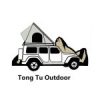Are OEM Crossbars Safe for Your Rooftop Tent? What You Need to Know Before Installing Your Tent
If you’re planning on setting up a rooftop tent (RTT) for your vehicle, you may be considering whether your current OEM crossbars can handle the weight and pressure of a rooftop tent, especially if your car is a Subaru Outback or a similar model. While rooftop tents offer great convenience for camping, setting them up on factory-installed roof racks can sometimes be a gamble. Here’s a breakdown of the key considerations when mounting your roof tent on OEM crossbars and some alternative solutions to keep you safe on the road.
Understanding the Risks: Why OEM Crossbars May Not Be Ideal for Rooftop Tents
One of the main concerns when mounting a rooftop tent on factory-installed crossbars is the weight capacity. The Subaru Outback’s OEM crossbars, for example, aren’t specifically designed to support the weight of a full roof tent system. According to many users, while the dynamic weight limit of these crossbars can seem adequate for a lighter rooftop tent (under 100lbs), the static weight limit (when the vehicle is stationary) is much lower, and this can be problematic, especially if you plan on adding additional gear inside the tent.
What’s the Real Weight Capacity of OEM Crossbars?
The dynamic weight limit refers to the weight the roof rack can support while the vehicle is in motion. Most factory-installed crossbars are rated to support approximately 150lbs dynamically. However, this can be risky if your tent plus gear (including your sleeping bags, equipment, and any extra passengers) exceeds this limit.
On the other hand, the static weight limit is the weight the roof rack can support while stationary. For the Outback’s OEM crossbars, this can often be as low as 176lbs for the entire vehicle’s roof rack system. With an RTT weighing 100lbs, adding sleeping gear, dogs, or multiple people could easily push the limit, which could cause strain on the crossbars and even damage the roof of your car.
Real User Experiences: Should You Trust Your OEM Crossbars?
Many Subaru Outback owners have shared mixed experiences when using their factory-installed crossbars for rooftop tents. Some have successfully camped for multiple seasons using a lightweight rooftop tent (around 80lbs), but they also report that the added weight, plus their gear, caused wear on the bars over time.
For example, one user mentioned they traveled extensively with a James Baroud Evasion RTT mounted on their 2015 Outback, and while the setup worked fine initially, they eventually switched to aftermarket crossbars for better clearance and durability after a few years of use. While they didn’t experience catastrophic issues, the need for better clearance and security led them to upgrade.
Aftermarket Crossbars: A Safer Option for Your Rooftop Tent
If you’re looking to avoid potential issues with your OEM roof rack, many overland enthusiasts recommend investing in aftermarket crossbars specifically designed for the added weight of a rooftop tent. Several brands offer durable roof rack systems that are compatible with a variety of vehicles and provide increased static weight support.
Some top aftermarket options include:
Yakima RoundBar Setup: Known for their stability and reliability, Yakima’s system supports up to 700lbs static weight when paired with the correct fit kit.
Thule AeroBlade: Another popular choice for rooftop tent campers, Thule’s crossbars are designed for ease of installation and strong weight support.
Investing in a high-quality aftermarket system will give you peace of mind and ensure that your rooftop tent setup is both safe and durable, especially for longer trips on rugged terrain.
Key Considerations When Choosing the Right Crossbars for Your Rooftop Tent
If you’re not sure whether your OEM crossbars will handle your rooftop tent, consider the following factors before deciding:
Weight of the Tent: Be sure to check both the dynamic and static weight limits for your vehicle’s roof rack system.
Load Distribution: Ensure that the load is evenly distributed across the roof to prevent undue strain on the bars.
Vehicle Suspension: Keep in mind that even if the crossbars can hold the weight, your vehicle’s suspension may suffer under prolonged strain, particularly on bumpy or rough roads.
Material Quality: Aftermarket crossbars are often made from stronger materials like aluminum or steel, providing better durability over time.
What Happens If You Overload Your OEM Crossbars?
Overloading your OEM roof rack can lead to a number of issues:
Damage to the Roof: If the rack can’t bear the weight, it may cause permanent damage to the vehicle’s roof, including dents or cracks.
Unsafe Driving: Overloading your vehicle’s roof can affect its handling, especially during cornering or high-speed driving.
Risk of Rack Failure: If the crossbars break, it can result in your tent and all your gear falling off while on the road—an extremely dangerous situation.
Conclusion: Is It Worth the Risk to Use OEM Crossbars for Your Rooftop Tent?
While it’s possible to use OEM crossbars with a light rooftop tent, it’s not the most reliable or safest option in the long term. For a worry-free camping experience, it’s best to invest in aftermarket crossbars that are specifically rated to support the weight and dynamic forces of a roof tent system. With the right setup, you can enjoy your camping adventures without stressing about the security of your gear.
So, before heading out, check the weight limits of your vehicle’s roof rack, consider upgrading to a more robust solution, and make sure your rooftop tent is mounted safely and securely.
Keywords included: rooftop tent, roof tent, OEM crossbars, Subaru Outback, overland tent, aftermarket crossbars, roof rack, car top tent, camping with rooftop tent, weight limit rooftop tent.
Let me know if you need further modifications or more details for the article!
